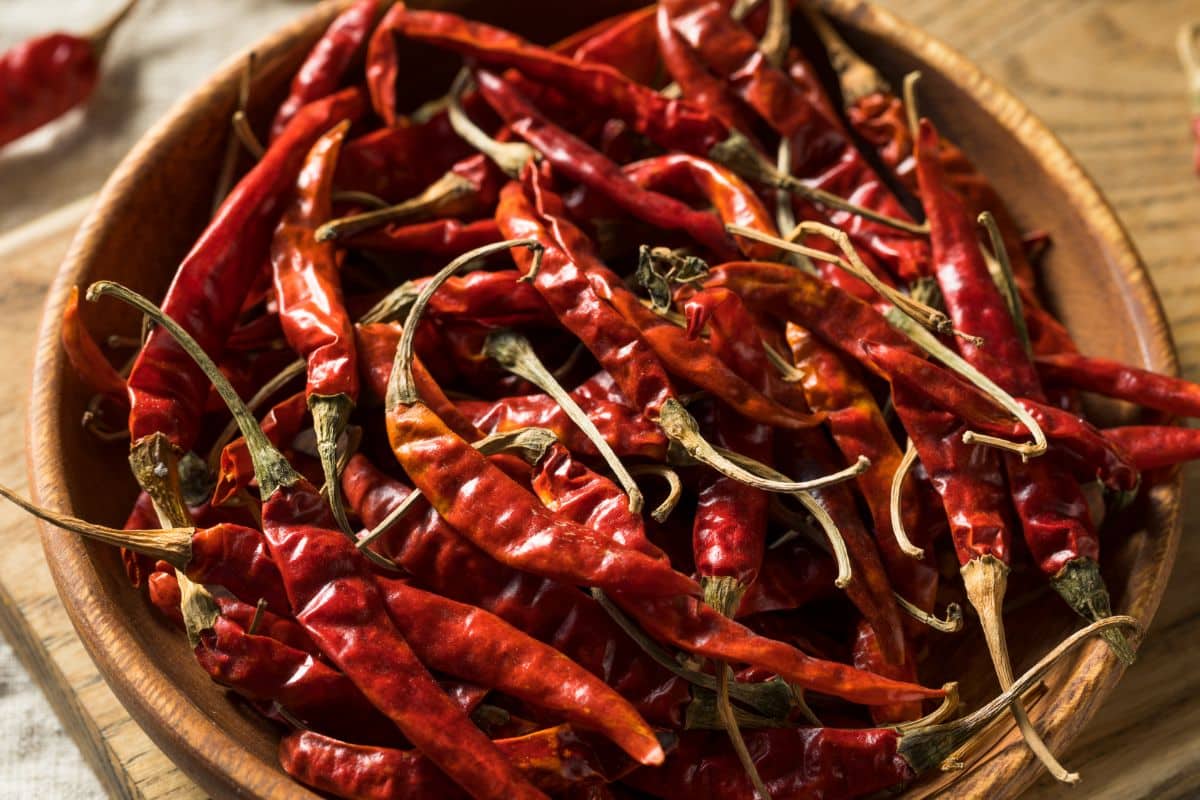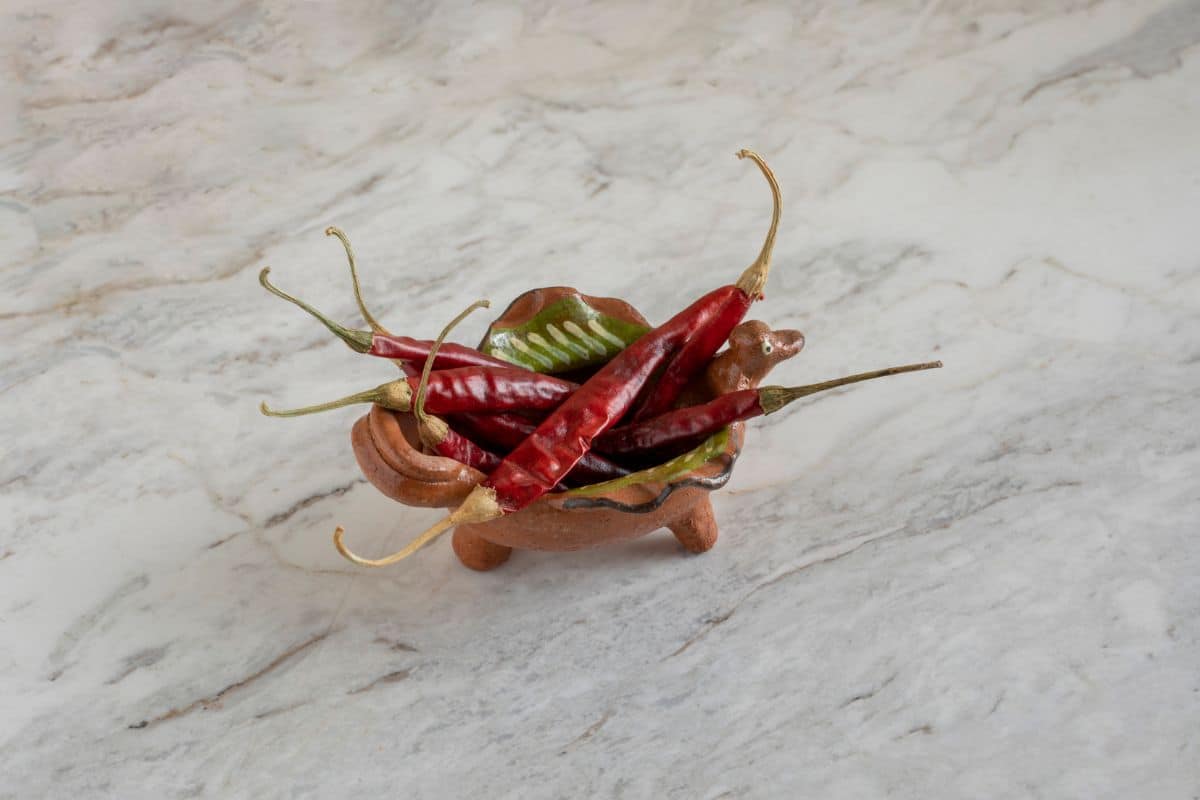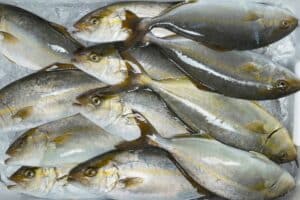Chile De Árbol, or as you will sometimes see it being called, tree chili is a certain type of pepper which you will find being used very often in different aspects and recipes in Mexican cuisine. Chile De Árbol is a type of chili pepper in particular.

This type of chili is small, and the taste is biting, as well as hot and sharp. You will find that Chile De Árbol is usually red, however, like a lot of other types of chili peppers, they can be found in yellow and green colors as well.
As mentioned, these peppers are often used in different dishes in Mexican cuisine, the most common being, chili, salsa, and other dishes which need a spicy kick. You will occasionally find this type of chili being called rat’s tail chile, or perhaps bird’s beak chile.
This chili originates in Mexico which is part of the reason why it is so common in their cuisine. The small pepper will usually reach maturity at 2 to 3 inches long. They also have a noticeable pointed end, as well as a thin shape.
This thin shape is actually quite useful since this makes them quicker and easier to dry. The heat level of Chile De Árbol can range from anywhere between moderate heat to very hot.
When you eat these peppers fresh, you will notice that they have a brighter and more grassy flavor which has recognizable citrus undertones.
However, when you dry Chile De Árbol it will have a much more smoky flavor and this will add extra depth into the dishes which you use it with.
While you will find that Chile De Árbol is a very common ingredient when it comes to Mexican cuisine, you can use it in cuisine from any origin, and it will add a delicious depth of flavor with a smoky tone.
Chile De Arbol Vs Serrano
When you are looking at different peppers that are available, there is an excessive amount of choice, and this means that you will very often find people comparing different types of peppers.
One of the two most commonly compared peppers, especially when it comes to cooking, are Chile De Árbol and serrano. Part of the reason why these two peppers are so commonly compared to each other is because their size and their shape is similar.
They both have a similar smaller shape as well as being slender with pointed ends as well. However, the main difference which is more obvious when you taste it is their heat level.
When eating a serrano pepper, you will notice that it is a lot less hot than a Chile De Árbol pepper.
A serrano pepper has a heat level that is between 10,000 to 25,000 Scoville heat units, while a Chile De Árbol pepper will have a heat level that is usually between 15,000 and 30,000.
This means that while Chile De Árbol will tend to be hotter than serrano peppers and they can get hotter, there can be some serrano peppers that are hotter than some Chile De Árbol. These peppers are both not as hot as a spicier pepper like habaneros.
Dried Vs Fresh
A comparison with Chile De Árbol which we have already mentioned is comparing dried Chile De Árbol to fresh Chile De Árbol. When we are looking at the flavor produced by each of these, this is where we can recognize the most obvious differences.
A dried Chile De Árbol pepper will have a flavor that is a lot more intense when compared to the fresh version. The reason for this is that the process of drying the Chile De Árbol will concentrate the flavor of the pepper.
Then the heat level in a dried chile will be a lot higher as well when compared to a fresh one. This means that if you are looking for a chili which is going to have a more mild flavor, then you should opt for eating a fresher pepper.
There are other differences other than just the heat level and the intensity of the heat as well. Another one of the most obvious differences between a dried and a fresh Chile De Árbol is that they have a noticeably different texture.
You will find that a dried Chile De Árbol pepper will have a texture that is a lot more tough, and the appearance will be more wrinkled. This is compared to a Chile De Árbol which will be a lot fleshier as well as smoother too.
The main reason this happens is that the water will evaporate when you are drying the pepper and this will leave a pepper which is smaller and a lot more concentrated too.
If you are choosing to use Chile De Árbol peppers in a cooking dish, then you will want to rehydrate the peppers before you choose to add them into a pot. To do this you will want to soak your peppers in warm water for around 30 minutes.
After this point the peppers should be rehydrated and then you can add them to your recipe however you want. Aside from this you can use fresh Chile De Árbol without needing to do any more prep work.
You can also use dried Chile De Árbol in recipes as well, but this has different applications compared to fresh Chile De Árbol.
Because of this you will want to ensure that you are not using these two ingredients interchangeably because they have a very different taste and texture.
Growing Chile De Arbol Plant

If you want to have easier access to Chile De Árbol one thing you should do is try growing your own Chile De Árbol plant. This will mean that you will have cheaper access to this chili, and you can use it more sustainably.
However, you will want to ensure that you are taking the right steps to prepare them properly.
For example, the first step you will need to take when it comes to growing Chile De Árbol is that you should find a spot in your garden where the plant will be able to get enough sunlight. After this you will want to get all the supplies you will need to plant the seedlings.
Some supplies which you are going to need are pots which have a good drainage quality as well as a good potting mix and a spray bottle.
You will also want to have some smaller pots or trays for using. Once you know you have everything you need you will be ready to start planting your Chile De Árbol.
Planting Process
Firstly you are going to want to get one of your pots and will do this with the potting mix that you have prepared. Then you want to add a few of your Chile De Árbol seeds into the soil. You will want to ensure that you do not add too many seeds.
If you do this you may overcrowd your plant and this will end up stunting the growth instead of promoting it. Then once you have added the seeds you can use your spray bottle to mist the soil until you have gotten it damp.
At this point you will want to ensure that you are not overwatering. Once you have used the spray bottle you will want to put your smaller pots or trays into the area where the plants will be able to get as much light as they need.
This could be outdoors, near a window that gets a lot of sun, or under grow lights. Then all you need to do is wait for your seeds to finally germinate.
Once you know that your seeds are germinating you will need to care for them by watering the plants often and keeping the soil moist, however you also want to avoid overwatering and making it, so the water ends up soggy.
This is because you will want your plants to thrive and not to drown. Once you have done this you will want to keep caring for your Chile De Árbol plant and to let it grow to maturity.
Then you can either use the plant fresh or you can dry it out and use it as dried Chile De Árbol.
Substitutions
If you do not live close to somewhere where you can buy Chile De Árbol, and you do not have the resources or time to grow it yourself, then you might be finding it hard to use it in recipes.
Because of this, we have gathered some of the best substitutions for Chile De Árbol for you to use if you do not have Chile De Árbol, or if you simply want to just try something different.
One of the most common substitutions which is commonly used for Chile De Árbol is cayenne, however you will want to ensure that you are using it in a different amount.
For cayenne, you will want to only use half a teaspoon for every 2 tablespoons of arbol powder that you are using in a recipe.
The reason why cayenne is such a common substitution for Chile De Árbol is that it contains capsaicin which is an ingredient in the pepper which essentially lends the pepper their heat.
If you are using a moderate amount of capsaicin in your dish like that in Chile De Árbol then you will be able to give your dish a similar amount of spiciness which you would usually get from using Chile De Árbol instead. Then there is guajillo as well.
You can use 2 tablespoons of guajillo powder for every teaspoon of Chile De Árbol chilies which your recipe asks for. The reason why you can use so much extra guajillo peppers when compared to Chile De Árbol peppers is that they are a lot less spicy.
You will find that these peppers have a heat which is between 2500 and 5000 when looking at the SHU. These chilies also have a pleasant berry flavor which has hints of flavor profiles similar to green tea and tobacco.
If you choose to rehydrate this type of chile as well you will find it has a stunning red color as well. This adds an amazing visual appeal to the dish as well.
While we compared their differences earlier, you can actually substitute serrano for Chile De Árbol at a 1:1 ratio.
These peppers have a similar heat range like we mentioned earlier, and while they might be a little less spicy, they will still have a similar effect if you choose to eat one.
The flavor of serrano peppers is a lot more bright and sharp, and they will also give the dish a bit more acidity too. You will want to make sure that you are not using too much serrano as this could end up overpowering other flavors too.
Another type of chili which works well as a substitute for Chile De Árbol is pasilla chilies. For every tablespoon of Chile De Árbol powder you can use 1 pasilla chile.
These are similar to the ancho and the mulato chilies, however they are a lot more mild with an SHU between 1000 and 2500.
You will find that these chilies have undertones that are a little more fruity and even chocolaty, so make sure that this will complement the flavor of the dish which you are preparing.
Then there are also chili flakes and you can use these at a similar rate as you would Chile De Árbol powder. These are usually dried and crushed red chilies and they work well. Make sure they do not become overwhelming by using too many though.
Summary
Hopefully this guide has given you all the information you need about how you can use Chile De Árbol peppers and how to take advantage of them when preparing Mexican cuisine.
There are other chilies which you can use as a substitute, but you could also try and grow your own Chile De Árbol plant too.






